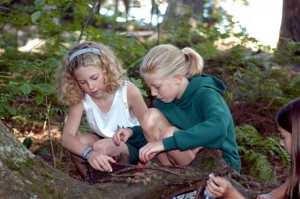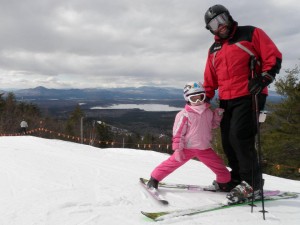
Chris Wentworth, Operations and Trip Coordinator
On Monday March 11th, I will be participating in the 2013 Wildcat Mountain 100k Vertical Challenge which is a benefit for the Make-A-Wish New Hampshire Foundation. I will be attempting to ski 100,000 vertical feet in under nine hours. I will need to make 48 runs down the Lynx Trail on Wildcat Mountain. As I started my fund raising for this event, I received a message from Barb and Jeff Hollis. Barb is a former Wyo Unit Director and Jeff is a former Winona counselor. They are the parents of Jenn Perkins, who has been at Wyonegonic for over 25 years, and the grandparents of Linda, Cameron, Topher and Lauren Perkins who are Wyonegonic and Winona campers and staff members. They wished to support the Make-A-Wish Foundation by donating to my event.
It was then that I found out that Barb and Jeff, along with their family and friends, have been long time supporters of Make-A-Wish. For over ten years, they worked very hard to raise over $600,000 and made 100 kids’ wishes come true. They did all this work in honor of their son, Christopher Hollis, who had his wish granted in 1993. Chris was in Pooh Corner at Wyonegonic from 1976 to 1985 while Barb was Intermediate Unit Director. Below is the story that Barb shared with me about Chris’ wish.
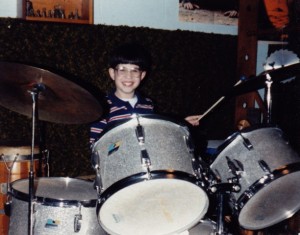 Chris suffered from neurofibromatosis and suffered a massive stroke after some neurosurgery back in 1990. The wish volunteer team came to Chris’ house and asked him what his wish would be if he could have a wish. Chris explained that he wanted to meet “David Knight” (David Hasselhoff) and sit in the car “Kitt” from the show “Knight Rider” which was on display at Universal Studio in California. The team went back to Make-A-Wish and his wish was approved. It would take about six months to set it all up. In the mean time, the family, and his medical team decided this would be a great opportunity to challenge Chris to complete some goals from his physical therapy & speech therapy teams. He had been totally paralyzed from his stroke and was wheel chair bound, could not speak or breathe on his own and he had reached a plateau with his therapy. He was told that if within six months he could learn how to stand, pivot & transfer from his wheelchair, start breathing without his trach tube, and speak clearer he could meet David Hasselhoff and sit in the car “Kitt” . He immediately was motivated and started working harder. Within three months the entire medical team was amazed Chris had reached his goals, but the wish details had not been completed. We had to come up with some more goals!
Chris suffered from neurofibromatosis and suffered a massive stroke after some neurosurgery back in 1990. The wish volunteer team came to Chris’ house and asked him what his wish would be if he could have a wish. Chris explained that he wanted to meet “David Knight” (David Hasselhoff) and sit in the car “Kitt” from the show “Knight Rider” which was on display at Universal Studio in California. The team went back to Make-A-Wish and his wish was approved. It would take about six months to set it all up. In the mean time, the family, and his medical team decided this would be a great opportunity to challenge Chris to complete some goals from his physical therapy & speech therapy teams. He had been totally paralyzed from his stroke and was wheel chair bound, could not speak or breathe on his own and he had reached a plateau with his therapy. He was told that if within six months he could learn how to stand, pivot & transfer from his wheelchair, start breathing without his trach tube, and speak clearer he could meet David Hasselhoff and sit in the car “Kitt” . He immediately was motivated and started working harder. Within three months the entire medical team was amazed Chris had reached his goals, but the wish details had not been completed. We had to come up with some more goals!
Then another hurdle was thrown our way when it was discovered that David Hasselhoff was not going to be available to meet with his because of a conflict with his schedule. So the wish team came back and told Chris he could still go sit in the car “Kitt”, but David was not going to be available. They asked what else he might want to do while in California. He decided he would like to see a taping of “Wheel of Fortune” and meet Vanna White, go to the taping of “Price is Right” and a show called “Supermarket Sweep”. These were three other shows that Chris watched daily. These requests were set up immediately and we were all set to travel to California. (Make-A-Wish sets up all the details, pays for everything from tips, airfare, lodging, meals, rental car, souvenirs – there is no cost to the family.) Chris was able to invite his best friend Kris Doucette to go along as well.
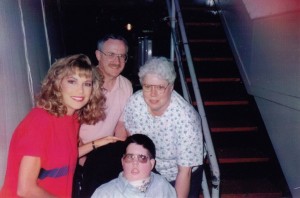 Three days before we were ready to leave, the Make-A-Wish team called to tell us that David Hasselhoff was going to be available to have brunch with us after all! Needless to say Chris was so excited I don’t think he slept much before we left. He basically got two wishes as they didn’t cancel the other events. The first event was going to see a taping of “Wheel of Fortune”. Vanna White met us and gave us a VIP tour of the studio and introduced us to Pat Sajak and they had a tote bag of goodies for all of us. Chris loved watching how they produced the show and what happened behind the scenes. The next event was to see a taping of Price is Right and once again we were treated like VIPS and he was introduced to Bob Barker. The next morning was the taping of “Supermarket Sweep” where the producer and host met us with a sweatshirt with Chris’ name on it. Chris was told he could come back when he could run and be a participant on the show someday.
Three days before we were ready to leave, the Make-A-Wish team called to tell us that David Hasselhoff was going to be available to have brunch with us after all! Needless to say Chris was so excited I don’t think he slept much before we left. He basically got two wishes as they didn’t cancel the other events. The first event was going to see a taping of “Wheel of Fortune”. Vanna White met us and gave us a VIP tour of the studio and introduced us to Pat Sajak and they had a tote bag of goodies for all of us. Chris loved watching how they produced the show and what happened behind the scenes. The next event was to see a taping of Price is Right and once again we were treated like VIPS and he was introduced to Bob Barker. The next morning was the taping of “Supermarket Sweep” where the producer and host met us with a sweatshirt with Chris’ name on it. Chris was told he could come back when he could run and be a participant on the show someday.
Now it was finally time to meet David Hasselhoff and I had not seen Chris so excited for years to meet his TV hero. The hotel had set aside a private area for us to have brunch. David Hasselhoff arrived by himself and knelt down beside Chris’ wheelchair for about the first 15 minutes talking to Chris eyeball to eyeball. At that time “Baywatch” was just taking off and David told Chris all about that show as well as Knight Rider , but the main focus was the show “Knight Rider” Hasselhoff had brought Chris souvenir items from both Baywatch and Knight Rider and had brought pictures which he autographed personally to every child and teacher in his school.. He stayed about 1½ hours with us and had brought his own camera with him as he keeps a file with a picture of every child he meets. During brunch David asked where we were going after that and Chris told him to go see “Kitt”. David asked Chris to say “hi” to Kitt and also picked up his phone and called his favorite restaurant “Gladstone” on Malibu and asked them to give us his favorite table and Hasselhoff would pick up the tab.
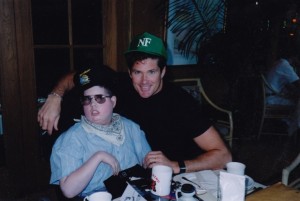 So, now we headed off to sit in the car “Kitt” not knowing that “Kitt” would talk to you (not sure where they hid the person). Kitt said “hi” and asked Chris’ name. Chris immediately told him that Michael (David Hasselhoff) had said to say hi when we had brunch with him. (I immediately said Chris was a Make-A-Wish child and that person immediately picked up on it and ran with the conversation). Needless to say Chris was totally blown away.
So, now we headed off to sit in the car “Kitt” not knowing that “Kitt” would talk to you (not sure where they hid the person). Kitt said “hi” and asked Chris’ name. Chris immediately told him that Michael (David Hasselhoff) had said to say hi when we had brunch with him. (I immediately said Chris was a Make-A-Wish child and that person immediately picked up on it and ran with the conversation). Needless to say Chris was totally blown away.
One of the best things that happened during the week we were gone was that Chris and his family were just a “normal family” on vacation – no treatments, no physical therapy, or no doctor appointments. This is one of the major goals of Make-A-Wish; to provide a break from all the unpleasant activities that children and their families deal with while dealing with life-threatening illnesses.
When Chris returned to his medical treatments and appointments the doctors and physical therapists could not believe what a new lease on life Chris was displaying. Two years later Chris passed away and one of his doctors told me that he thought Chris’ wish had probably helped extend his life for those two years. As a family it was hard to accept his death, but we have such fond memories and tons of pictures that we can look back at and remember a “special week” that the Make-A-Wish had given us.
Because of such a positive experience, we decided to start a benefit golf tournament in Chris’ name with all the net proceeds to go to the Make-A-Wish of Massachusetts to grant “wishes” to other children and their families. We were fortunate to have many friends and Boston Celtics great K.C. Jones who helped us. We had set a goal of granting 100 wishes and we reached our goal of raising $600,000 dollars over a period of ten years to fund those 100 wishes.
Please consider donating to the Make-A-Wish Foundation but clicking on this link to my event fundraising page. I hope that I can continue to support this event each year in honor of Chris and the Hollis family, and all they have done for some many deserving kids.
 The Wall Street Journal posted an article posing this question, “You are shrunk to the height of a nickel and thrown into a blender. The blades are about to start, what do you do?” The title of this article, How to Ace a Google Interview is ironic because the answer is not just a click away.
The Wall Street Journal posted an article posing this question, “You are shrunk to the height of a nickel and thrown into a blender. The blades are about to start, what do you do?” The title of this article, How to Ace a Google Interview is ironic because the answer is not just a click away.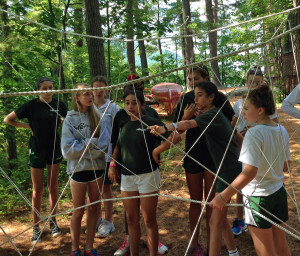 In her book, How to Teach Thinking and Learning Skills, C.J. Simister, education expert, writes about how “critical thinking and creative thinking are, in many cases, interrelated as situations depend on gathering and absorbing information (critical thinking) leading to the transformation of this knowledge to generate new ideas (creative thinking)“. Promoting critical and creative thinking appears to be at the forefront of school’s agendas. Camps, on the other hand, have been developing these kinds of thinking for decades.
In her book, How to Teach Thinking and Learning Skills, C.J. Simister, education expert, writes about how “critical thinking and creative thinking are, in many cases, interrelated as situations depend on gathering and absorbing information (critical thinking) leading to the transformation of this knowledge to generate new ideas (creative thinking)“. Promoting critical and creative thinking appears to be at the forefront of school’s agendas. Camps, on the other hand, have been developing these kinds of thinking for decades.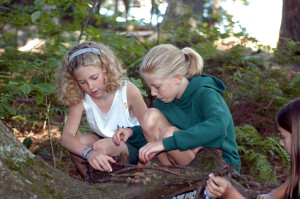 At camp, children are not able to Google the current wind direction, the elements of a ropes course challenge, the sounds of nature they are hearing, or the different ways to construct fairy houses. The answer is not a click away, and therefore they must rely on and develop the ability to think critically and creatively.
At camp, children are not able to Google the current wind direction, the elements of a ropes course challenge, the sounds of nature they are hearing, or the different ways to construct fairy houses. The answer is not a click away, and therefore they must rely on and develop the ability to think critically and creatively.


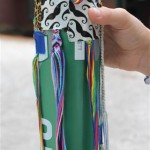 of kids home and bored for school vacation week, here are a few ideas from summer camp that may help entertain everyone when you are out of ideas!
of kids home and bored for school vacation week, here are a few ideas from summer camp that may help entertain everyone when you are out of ideas!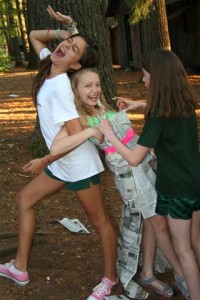 Grab the stationary and write fun letters or cards to friends, address the envelopes, and mail them out the old fashioned way! Perhaps they will be lucky and get a reply in a week or so. Start a letter writing chain, ask funny questions or create a “fill in the blank” style letter that a friend returns. Letter writing is a great life skill. As many a summer camp office staff can attest to, kids should learn
Grab the stationary and write fun letters or cards to friends, address the envelopes, and mail them out the old fashioned way! Perhaps they will be lucky and get a reply in a week or so. Start a letter writing chain, ask funny questions or create a “fill in the blank” style letter that a friend returns. Letter writing is a great life skill. As many a summer camp office staff can attest to, kids should learn 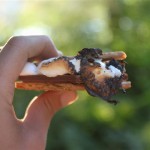 Of course get outside if you can (see our recent
Of course get outside if you can (see our recent 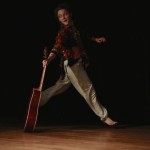
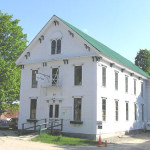
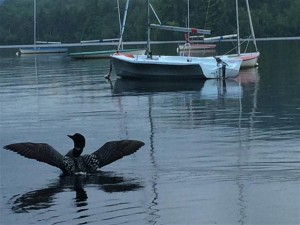
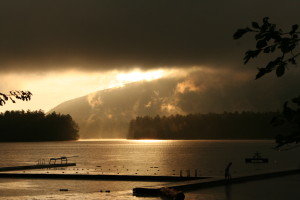 It is well known that being in nature has countless benefits to our cognitive, emotional, social and physical well-being. Yet,
It is well known that being in nature has countless benefits to our cognitive, emotional, social and physical well-being. Yet, 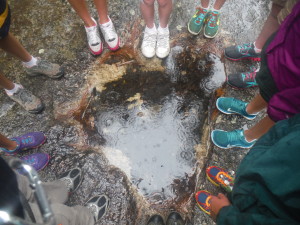
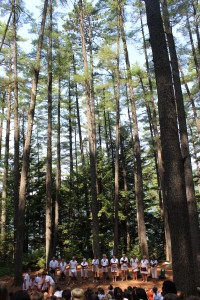
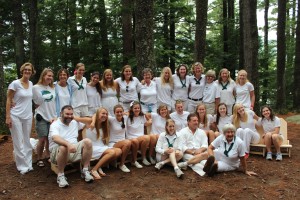
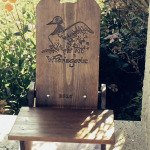
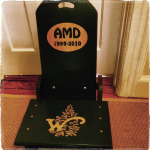 Recently, Ali D’Agostino had her chair decorated too. We both picked designs that were meaningful to us and it is incredible to see these chairs together. We received our Wiggie Chairs together in 2010, and it is great to be a part of a newer tradition that is just starting to surface. Others have begun decorating their chairs too and I am excited to see them when they complete. While each of our chairs have our individual touches, it is most compelling to see them together as part of a much greater whole, and as a reflection of the Wyo community.
Recently, Ali D’Agostino had her chair decorated too. We both picked designs that were meaningful to us and it is incredible to see these chairs together. We received our Wiggie Chairs together in 2010, and it is great to be a part of a newer tradition that is just starting to surface. Others have begun decorating their chairs too and I am excited to see them when they complete. While each of our chairs have our individual touches, it is most compelling to see them together as part of a much greater whole, and as a reflection of the Wyo community.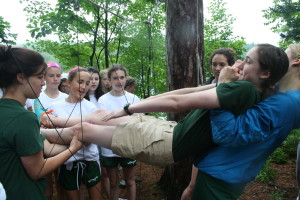
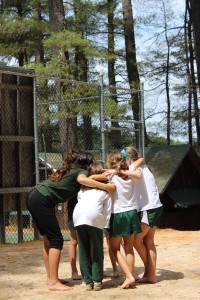
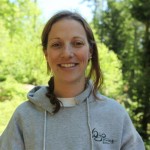
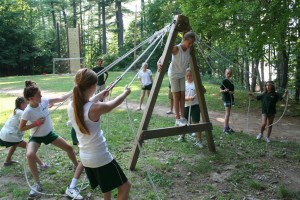
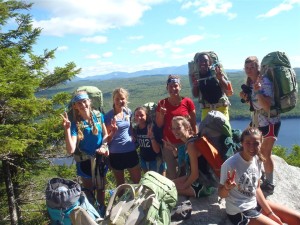
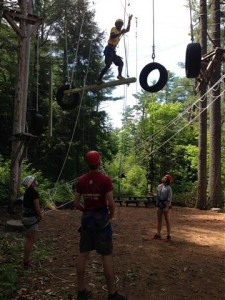
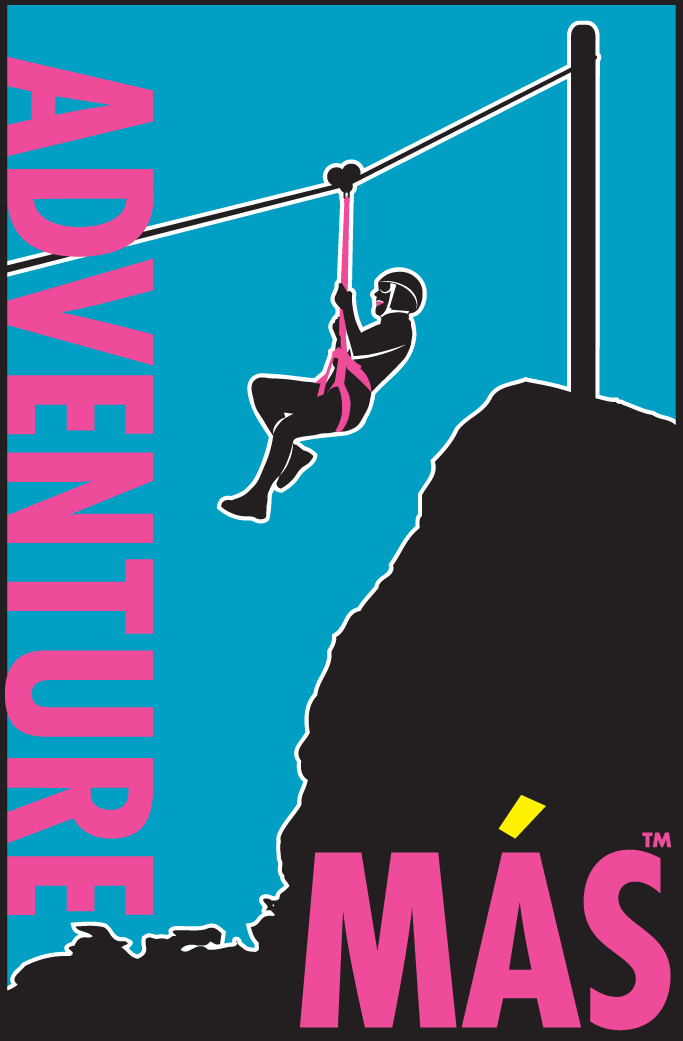 Mike has been involved with Adventure Mas for over six years and was recently appointed to the Adventure Mas Director’s position. Mike has been involved in the industry performing training, facilitation, course operations, building, and inspecting since 1978. Mike is currently the Vice-President of the
Mike has been involved with Adventure Mas for over six years and was recently appointed to the Adventure Mas Director’s position. Mike has been involved in the industry performing training, facilitation, course operations, building, and inspecting since 1978. Mike is currently the Vice-President of the 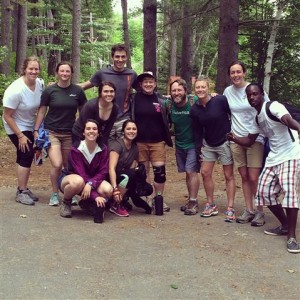 Says Mike, “This new ANSI Standard provides a consistent reference and much needed safety guidance for State Regulators, Inspectors, Insurers and Industry Professionals.” He adds, “Moreover, this standard enables course and tour owners/managers to conduct their own in-house training, certify their own staff and designate qualified persons to conduct course inspections – expensive services that previously required performance by a limited national vendor pool that could not adequately service the entire industry.”
Says Mike, “This new ANSI Standard provides a consistent reference and much needed safety guidance for State Regulators, Inspectors, Insurers and Industry Professionals.” He adds, “Moreover, this standard enables course and tour owners/managers to conduct their own in-house training, certify their own staff and designate qualified persons to conduct course inspections – expensive services that previously required performance by a limited national vendor pool that could not adequately service the entire industry.”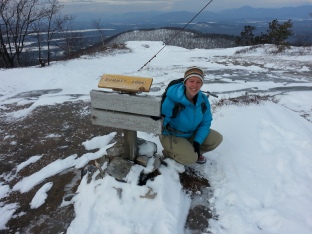 Recently, I celebrated my 30th birthday, and I’m pleased to say I’ve still spent over half of the summers of my life at Wyonegonic. Like so many other girls, Wyo has always been my special place. Over sixteen summers, it’s where I learned to love the outdoors, to challenge myself, and how to have fun. It’s where I made lifelong friends and formed many of my fondest memories. I started going to Wyo as an 8-year-old camper in 1992; nine years later I got my wiggie chair as an AC, and I only took one year off before spending six more summers as a senior counselor. As both camper and counselor, I especially loved going on trips or hanging from the ropes course. Wyo is also where I developed a strong love of hiking and of the outdoors, passions I’ve carried throughout my life. It’s been about five years since I’ve spent the summer “on the shores,” but I’m looking forward to more Wyo summer adventures in my future.
Recently, I celebrated my 30th birthday, and I’m pleased to say I’ve still spent over half of the summers of my life at Wyonegonic. Like so many other girls, Wyo has always been my special place. Over sixteen summers, it’s where I learned to love the outdoors, to challenge myself, and how to have fun. It’s where I made lifelong friends and formed many of my fondest memories. I started going to Wyo as an 8-year-old camper in 1992; nine years later I got my wiggie chair as an AC, and I only took one year off before spending six more summers as a senior counselor. As both camper and counselor, I especially loved going on trips or hanging from the ropes course. Wyo is also where I developed a strong love of hiking and of the outdoors, passions I’ve carried throughout my life. It’s been about five years since I’ve spent the summer “on the shores,” but I’m looking forward to more Wyo summer adventures in my future. Inspired by Pleasant Mountain’s everlasting presence at Wyo, this year I made a New Year’s resolution to hike Pleasant during each month of 2013. December 28, Zoe and I finished our last hike! Over the winter, we hiked the cell tower road and telemark skied down; though I won’t say I looked good skiing in the backcountry, I put some turns together! In the spring, we enjoyed the lengthening days and warmer weather. In June, Zoe and I did a solstice sunset hike and watched the moonrise from the summit, and in July/August we enjoyed munching on fresh blueberries. One of my favorite hikes was in September, when Chris, Zoe, and I all participated in the
Inspired by Pleasant Mountain’s everlasting presence at Wyo, this year I made a New Year’s resolution to hike Pleasant during each month of 2013. December 28, Zoe and I finished our last hike! Over the winter, we hiked the cell tower road and telemark skied down; though I won’t say I looked good skiing in the backcountry, I put some turns together! In the spring, we enjoyed the lengthening days and warmer weather. In June, Zoe and I did a solstice sunset hike and watched the moonrise from the summit, and in July/August we enjoyed munching on fresh blueberries. One of my favorite hikes was in September, when Chris, Zoe, and I all participated in the  Wyonegonic is pleased to be supporting the
Wyonegonic is pleased to be supporting the  We are not able to use any other footwear.
We are not able to use any other footwear.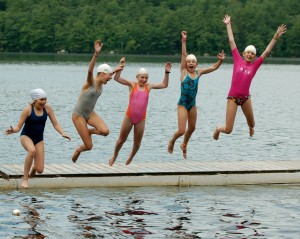
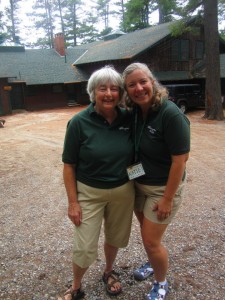
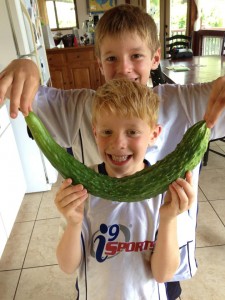
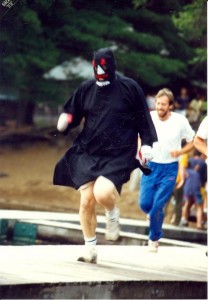
 We thought
We thought  This was a major project for our organization. We are also taking smaller steps to save energy or resources. This year, we will be installing
This was a major project for our organization. We are also taking smaller steps to save energy or resources. This year, we will be installing 



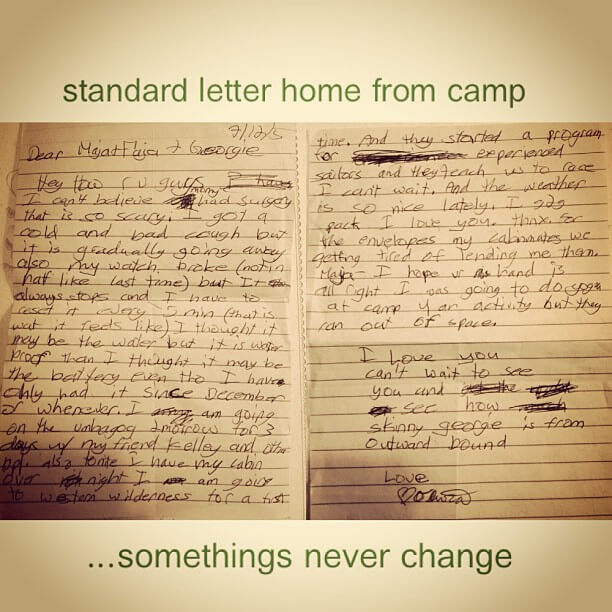
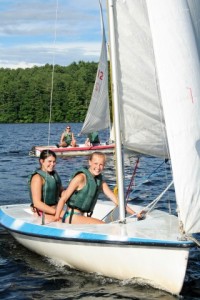
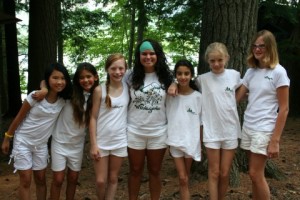
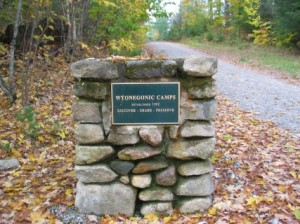
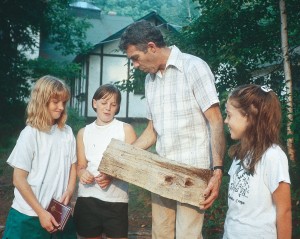
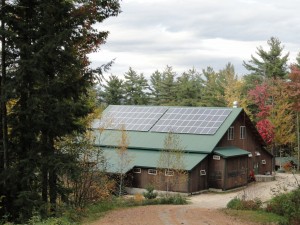 The question on how to “preserve” is constantly evolving. As a camp we can reduce our waste, recycle materials and minimize our energy consumption. In 1988, George had a simple idea of preserving the waters of Moose Pond. He invested in a septic system that eliminated leach beds along the shore by pumping effluent uphill and away from the pond. This was the one of the first systems of its kind in Maine and we continue to use it today. George would be proud to see the new solar panels on the Cobb Lodge dining hall and
The question on how to “preserve” is constantly evolving. As a camp we can reduce our waste, recycle materials and minimize our energy consumption. In 1988, George had a simple idea of preserving the waters of Moose Pond. He invested in a septic system that eliminated leach beds along the shore by pumping effluent uphill and away from the pond. This was the one of the first systems of its kind in Maine and we continue to use it today. George would be proud to see the new solar panels on the Cobb Lodge dining hall and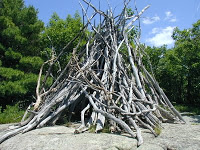

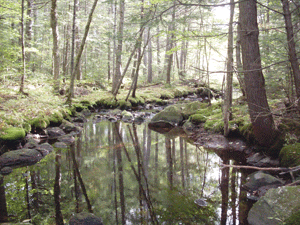
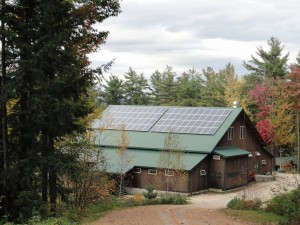

 I recently departed Atlanta where the the
I recently departed Atlanta where the the